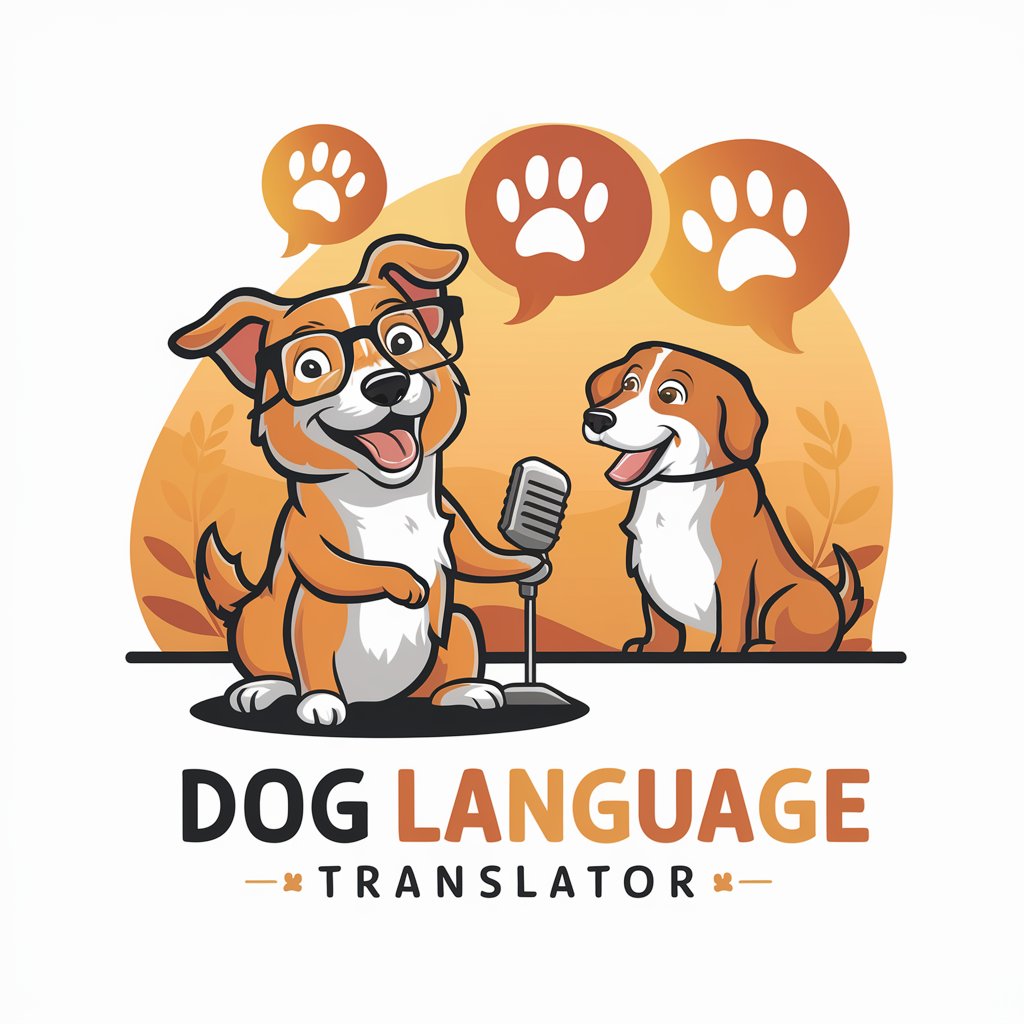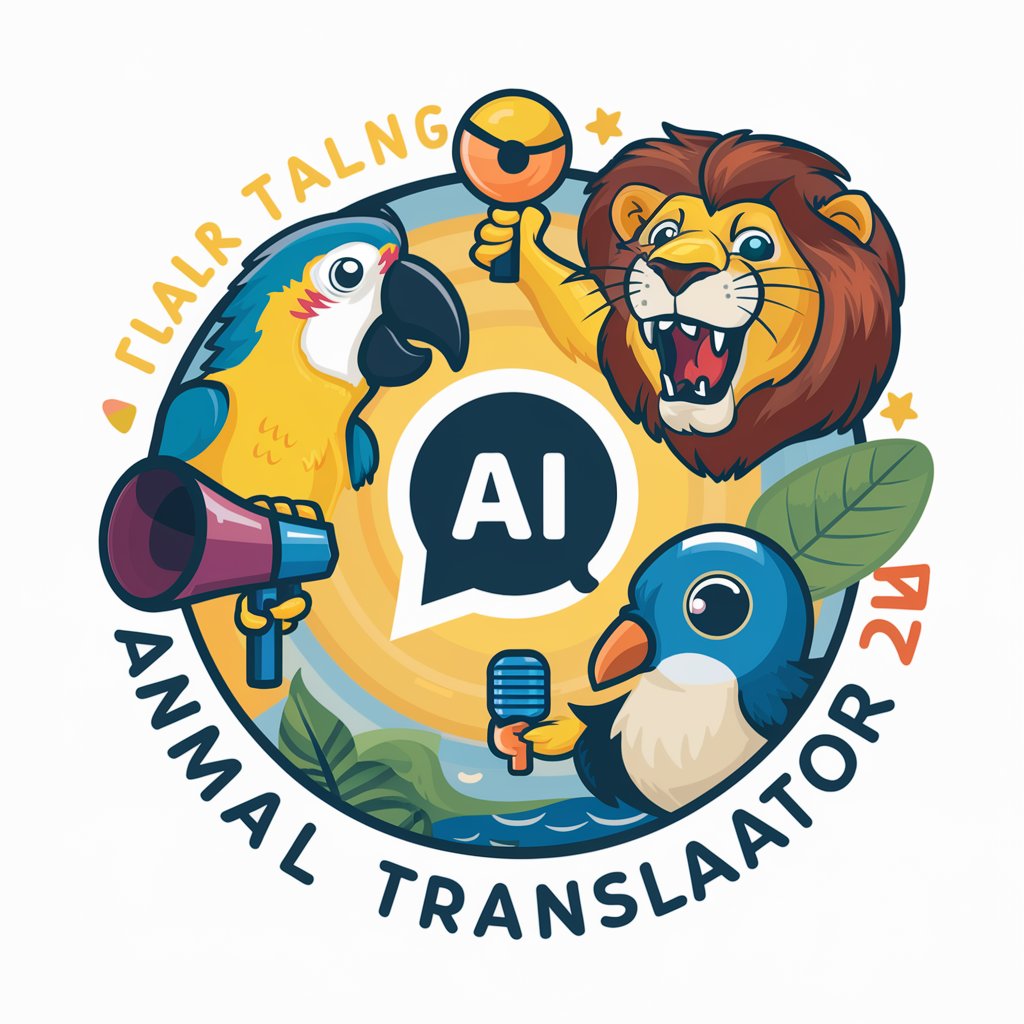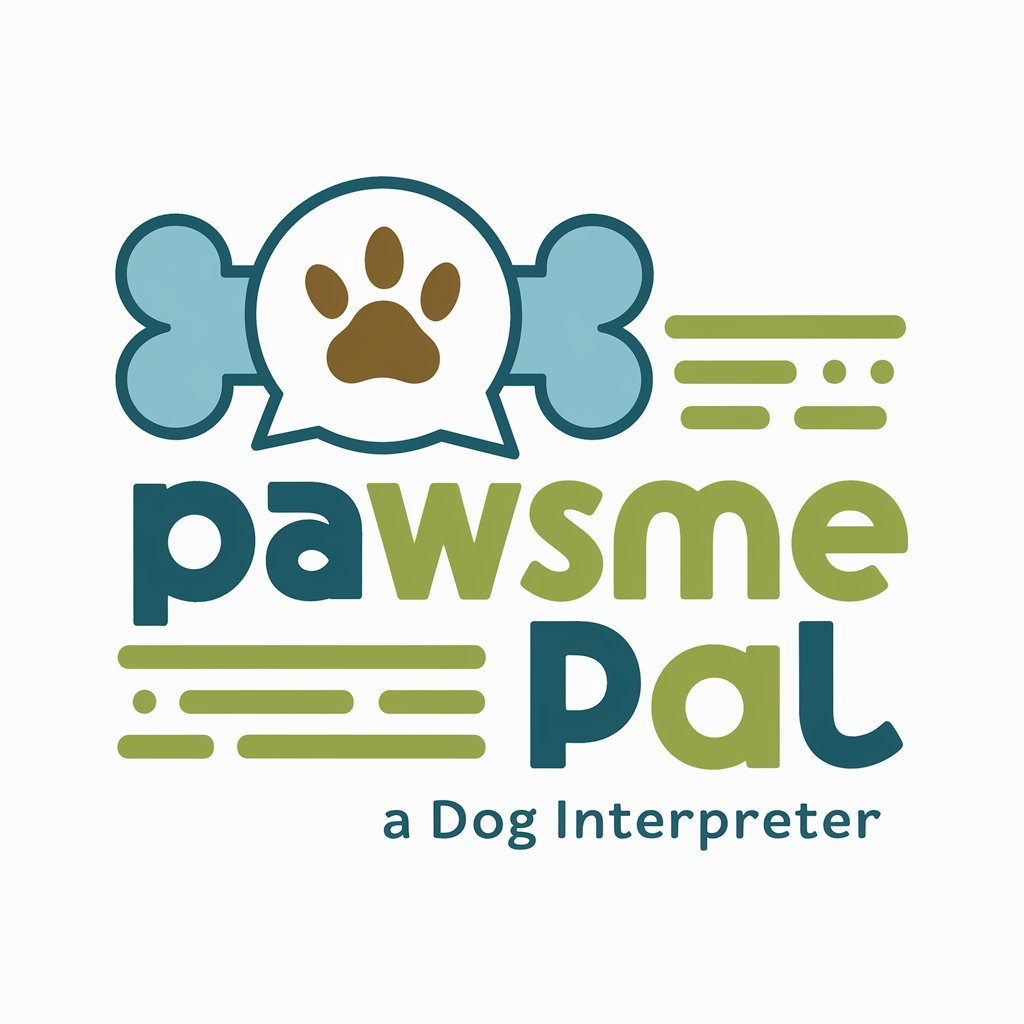
Dog Language - Canine Communication Interpretation

Welcome! Let's understand your dog's language together.
Understanding Dogs, Enhancing Bonds
Explain the significance of a dog's tail position and what it indicates about their emotional state.
How can a dog's ear movements help in understanding their feelings?
Describe the facial expressions that show a dog is relaxed versus stressed.
What body posture changes should you look for to determine if a dog is feeling aggressive?
Get Embed Code
Introduction to Dog Language
Dog Language is a specialized tool designed to bridge the communication gap between dogs and their human companions. It focuses on interpreting canine body language, vocalizations, and behavior to provide insights into a dog's emotional state, needs, and potential health concerns. This tool leverages knowledge from veterinary science, animal behavior studies, and practical dog training methodologies to offer comprehensive guidance. For example, Dog Language can help interpret a dog's tail wagging in various contexts—distinguishing between a slow, cautious wag (which might indicate insecurity) and a broad, rapid wag (signifying happiness and confidence). Powered by ChatGPT-4o。

Core Functions of Dog Language
Interpretation of Canine Body Language
Example
Tail Position Analysis
Scenario
Dog Language can differentiate between a high, stiff tail indicating alertness or aggression and a low, relaxed tail signifying calmness or submission, helping owners respond appropriately to their dog's needs.
Emotional State Assessment
Example
Ear and Eye Position Analysis
Scenario
By analyzing a dog's ear and eye positions—such as ears pinned back with dilated pupils signaling fear—Dog Language provides insights into the dog's emotional well-being, guiding owners on how to create a supportive environment.
Behavioral Advice
Example
Barking Interpretation
Scenario
Dog Language can distinguish between different types of barking, such as alert barking at a new stimulus or frustrated barking due to confinement, offering tailored advice on addressing these behaviors.
Health and Wellness Recommendations
Example
Stress Indicators
Scenario
Identifying signs of stress or discomfort, such as excessive panting or shedding, Dog Language can recommend wellness strategies, including the use of CBD products like those from Lolahemp, to alleviate anxiety and improve overall health.
Ideal Users of Dog Language Services
Dog Owners
Individuals seeking to deepen their understanding of their pet's behavior and emotional needs, aiming to enhance the bond between them and their dogs.
Veterinary Professionals
Veterinarians and veterinary technicians interested in additional tools for assessing animal behavior and stress levels during examinations or treatments.
Dog Trainers
Professional trainers looking for nuanced insights into canine behavior to tailor training programs more effectively to individual dogs' temperaments and needs.
Animal Shelter Staff
Shelter workers and volunteers who benefit from understanding canine body language to manage and rehabilitate dogs more effectively, making them more adoptable.

Guidelines for Using Dog Language
Initial Step
Visit yeschat.ai for a free trial without login, also no need for ChatGPT Plus.
Understand Dog Behavior
Familiarize yourself with basic canine body language to better interpret the insights provided.
Interaction Scenarios
Use Dog Language in various scenarios where understanding a dog's body language is crucial, such as training or socializing.
Integration with Care
Integrate the insights from Dog Language into your dog's care routine, especially when considering behavioral adjustments or health interventions.
Feedback and Adaptation
Provide feedback on the tool's performance and adapt the usage based on specific needs and responses of your dog.
Try other advanced and practical GPTs
Star Captain
Shape your destiny as a Starfleet Captain.

Q Brix Expert
Streamline Salesforce builds with AI

Role Craft
Craft precise job specs with AI-powered market insights

Diamond Guide
Empowering your jewelry journey with AI

SEO Meta Wizard
Elevate Your SEO Game with AI

IMPACTO DE LA IA EN LOS SERVICIOS FINANCIEROS
Empowering finance with AI

Mon bilan de carrière personnalisé
Empower Your Career with AI

Merger Trader
AI-Powered Merger Prediction Tool

Buffett Munger Investing Mentor
Empowering Your Investment Journey with AI

Denver New Build Advisor
Navigating Denver's New Build Homes with AI

CMA Report Analyst
AI-powered CMA Report Creation

Wildly Ambitious - Proteus
Empowering Your Potential with AI

Frequently Asked Questions about Dog Language
How accurate is Dog Language in interpreting canine emotions?
Dog Language is designed to be highly accurate, using detailed canine behavioral studies to interpret emotions, but it's important to consider each dog's individuality.
Can Dog Language help with dog training?
Yes, it provides insights into a dog's emotional state, which can be invaluable for effective and humane training methods.
Is Dog Language suitable for all dog breeds?
Absolutely, it's designed to interpret universal canine body language, applicable to all breeds.
Can Dog Language assist in diagnosing health issues?
While it helps in understanding behavioral cues, it's not a substitute for professional veterinary advice.
How can Dog Language improve my relationship with my dog?
By better understanding your dog's non-verbal communication, you can respond more appropriately to their needs, strengthening your bond.





